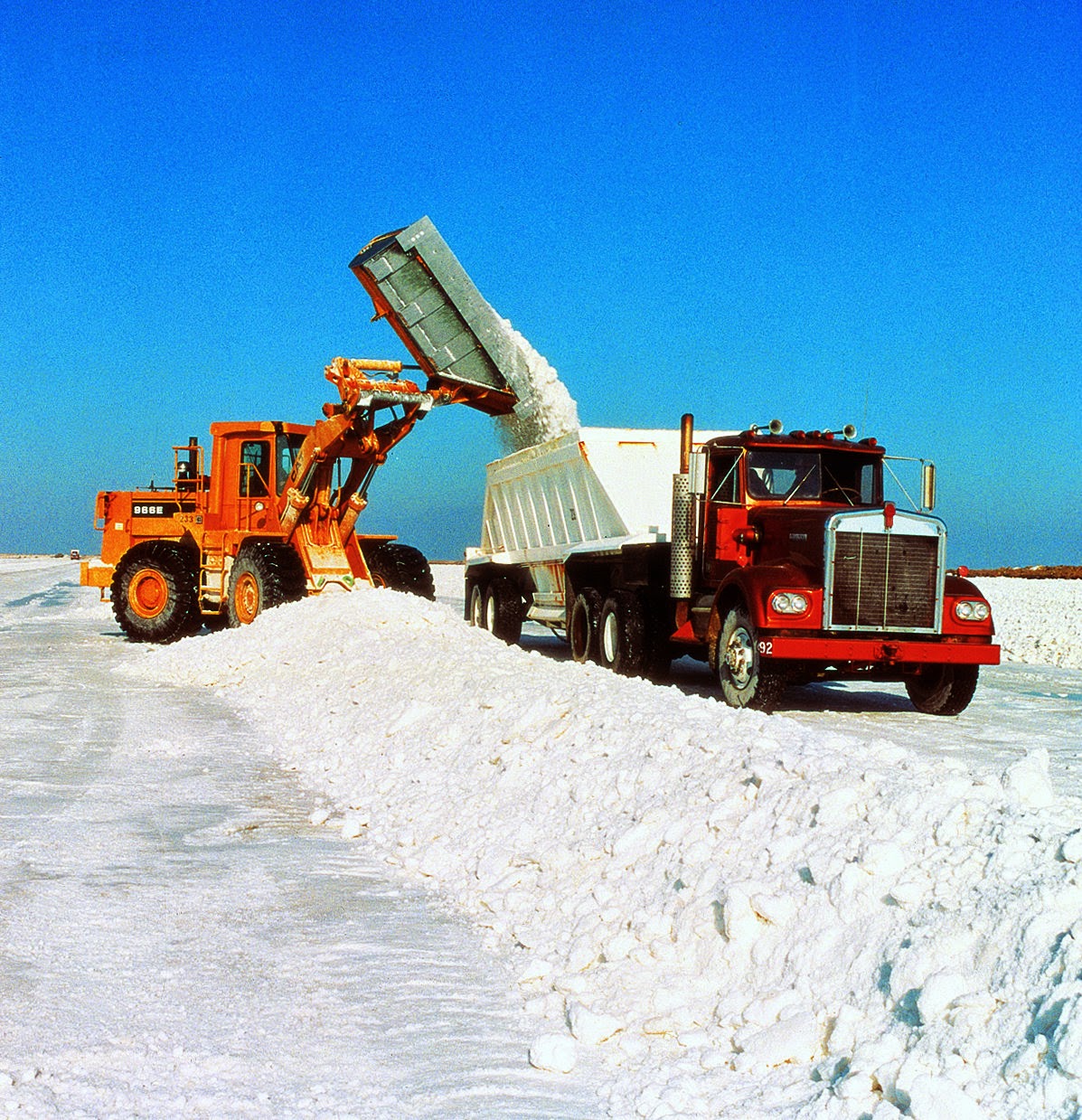Potassium fertilizer
is commonly added to improve the yield and quality of plants growing in soils
that are lacking an adequate supply of this essential nutrient. Most fertilizer
K comes from ancient salt deposits located throughout the world. The word
“potash” is a general term that most frequently refers to potassium chloride
(KCl), but it also applies to all other K-containing fertilizers, such as
potassium sulfate (K2SO4, commonly referred to as sulfate
of potash or SOP).
Production
 | |||
| Potassium sulfate, Great Salt Lake, Utah |
In New Mexico (USA), K2SO4 is
separated from langbeinite minerals by reacting it with a solution of KCl,
which removes the byproducts (such as Mg) and leaves K2SO4.
Similar processing techniques are used in many parts of the world, depending on
the raw materials accessible.
 |
| Potassium sulfate |
Chemical
Properties
Chemical Formula: K2SO4
K content: 40 to 44% (48 to 53% K2O)
S content: 17 to 18%
Solubility (25 ºC) 120 g/L
Solution pH approx. 7
Agricultural Use
Concentrations of K in soil are
often too low to support healthy plant growth. Potassium is needed to complete
many essential functions in plants, such as activating enzyme reactions,
synthesizing proteins, forming starch and sugars, and regulating water flow in
cells and leaves.
 |
| Potassium-deficient cotton |
Potassium sulfate is an excellent
source of nutrition for plants. The K portion of the K2SO4 is
no different than other common potash fertilizers. However, it also supplies a
valuable source of S, which is sometimes deficient for plant growth. Sulfur is
required for protein synthesis and enzyme function. There are certain soils and
crops where the addition of Cl- should
be avoided. In these cases, K2SO4 makes a very suitable K source. Potassium sulfate is only
one-third as soluble as KCl, so it is not as commonly dissolved for addition
through irrigation water unless there is a need for additional S.
Several particle sizes are
commonly available. Fine particles (<0.015 mm) are used for making solutions
for irrigation or foliar sprays since it is more rapid to dissolve. Foliar
sprays of K2SO4 are a convenient way to apply additional K and S to plants,
supplementing the nutrients taken up from the soil. Leaf damage can occur if
the concentration is too high.
Management
Practices
K2SO4 is frequently used for crops where additional Cl- from more common KCl fertilizer is undesirable. The partial
salt index of K2SO4 is lower than some other common K fertilizers, so less total
salinity is added per unit of K. The salt measurement (EC) from a K2SO4 solution
is less than a third of a similar concentration of a KCl solution (10 mmol/L).
Where high rates of K2SO4 are needed, it is generally recommended to divide the
application into multiple doses. This helps avoid surplus K accumulation by the
plant and also minimizes any potential salt damage.
A pdf version of this information is available
at the IPNI website here
 |
| Potassium-deficient soybeans |
A pdf version of this information is available
at the IPNI website here



GREAT CONTENT
ReplyDeleteTHANKS FOR SHARING
fertilizers
This comment has been removed by the author.
ReplyDeleteFertilizers are food for plants. Fertilizer helps farmers feed our growing population.
ReplyDelete